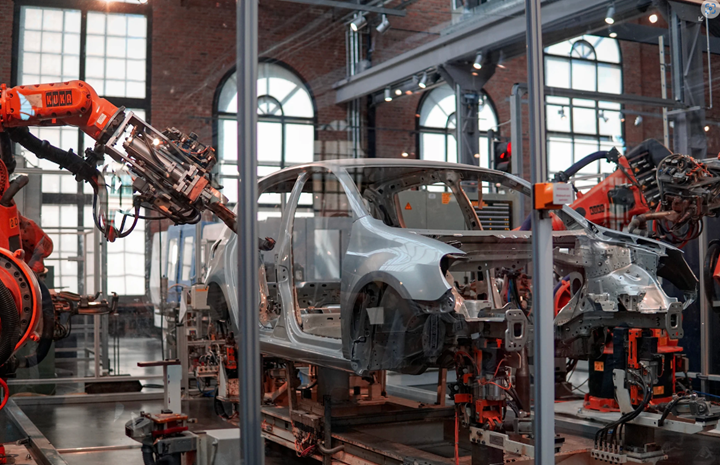KPI – October 2024: State of Business
KPI – October 2024: Recent Vehicle Recalls
KPI – October 2024: State of the Economy
KPI – October 2024: Consumer Trends
State of Manufacturing
Economic activity in the manufacturing sector contracted in September for the sixth consecutive month and the 22nd time in the last 23 months, say the nation’s supply executives in the latest Manufacturing ISM® Report On Business®.
“U.S. manufacturing activity contracted again in September – and at the same rate compared to last month. Demand continues to be weak, output declined and inputs stayed accommodative,” says Timothy R. Fiore, CPSM, C.P.M., chair of the Institute for Supply Management® (ISM®) Manufacturing Business Survey Committee.
According to Fiore, “demand remains subdued,” as companies showed an unwillingness to invest in capital and inventory due to federal monetary policy, which the U.S. Federal Reserve addressed by the time of this report, and election uncertainty. Moreover, suppliers continue to have capacity, with lead times improving and shortages reappearing.
“[Approximately] 77% of manufacturing gross domestic product (GDP) contracted in September, up from 65% in August,” Fiore says. “The share of manufacturing sector GDP registering a composite PMI® calculation at or below 45% (a good barometer of overall manufacturing weakness) was 41% in September, an 8-percentage point increase compared to the 33% reported in August.”
Caption: U.S. new vehicle sales were down 12% in September 2024. The Big Three – GM, Ford and Stellantis – were down 9.2%, 13.2% and 24.5%, respectively. While Toyota and Honda were down 20.2% and 8.6%, Tesla was up 9.1% – its first year-over-year increase in seven months.
Image Source: Tesla
Important Takeaways, Courtesy of the Manufacturing ISM® Report On Business®:
- Demand slowing was reflected by the (1) New Orders Index remaining in contraction territory, (2) New Export Orders Index contracting at a faster rate, (3) Backlog of Orders Index staying in strong contraction territory and (4) Customers’ Inventories Index indicating customers’ inventories were “about right.”
- Output (measured by the Production and Employment indexes) continued in contraction with mixed results: Employment shrunk at a faster rate while production approached expansion, with levels on par compared to August. Panelists cited continuing efforts by their companies to right-size workforces to levels consistent with projected demand.
- Inputs – defined as supplier deliveries, inventories, prices and imports – generally continued to accommodate future demand growth, with inventories returning to low levels and suppliers showing some difficulty in meeting customer needs.
What Respondents Are Saying, According to the Manufacturing ISM® Report On Business®:
- “North America demand has started to weaken. Asian demand is slightly higher but shows signs of weakness in future months. Comments tied to automotive builds.” [Chemical Products]
- “Global demand continues to remain soft. Fourth-quarter forecasts have been further reduced, with several new programs shifted from 2024 to 2025. Manpower, working capital and supplies are being flexed down in response. The previously anticipated shift from internal combustion engine to electric vehicle (EV) technology has been pushed out due to market response. Long-range plans are being adjusted to incorporate traditional products for longer, while new EV product offerings are being planned for slower rollouts.” [Transportation Equipment]
- “The second half of 2024 is trending upward enough to more than compensate for the year-over-year losses we experienced in the first half. We are anticipating a record sales volume for 2024.” [Food, Beverage & Tobacco Products]
- “The strategy of customer push-outs last year enabled those customers to adapt to the market. Now, while most companies are seeing a slowdown, we are seeing solid growth. The general slowdown in the economy is allowing for prices to continue to stabilize.” [Computer & Electronic Products]
- “A continuing low order rate is resulting in ongoing manufacturing adjustments to balance output with demand.” [Machinery]
- “The fourth quarter is slower than anticipated. We won’t realize the effect of interest rate adjustments with new project starts until the first quarter of 2025.” [Fabricated Metal Products]
- “Business is flat. Waiting for interest rates to drop and the election outcome in November before we confirm our 2025 plans. Currently planning on a flat 2025.” [Furniture & Related Products]
- “Our sales continue to be flat. Our customers are telling us that although our products perform very well, they are forced to seek lower-cost components to maintain their sales.” [Textile Mills]
- “Sales have slowed this quarter compared to the same time period last year. Adjusting production accordingly.” [Miscellaneous Manufacturing]
- “Still hiring to fill vacant positions in production/management. Not adding new jobs. Automotive original equipment manufacturers (OEMs) are starting to slow or cancel orders. The pace is slowing.” [Primary Metals]
